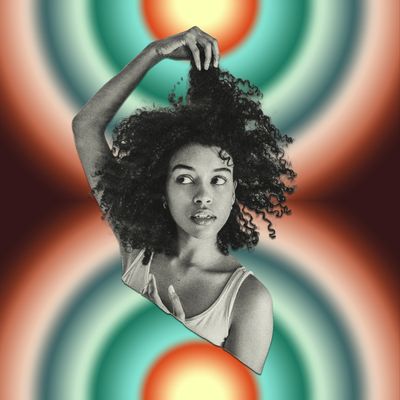
How accurate is the hair-typing system? Like, how do you know if you’re a 2b or a 4c, and does it really matter?
Before we discuss the accuracy or necessity of any particular hair-typing system, we have to give some credit where it’s due. The system most people know about — the one that categorizes hair based on its shape, from 1a (the straightest) to 4c (the most tightly coiled) — was originally proposed by hairstylist Andre Walker, and it gained popularity in the ’90s, when it was sorely needed. “During a transformative era when women were embracing the discovery of their natural hair, he generously shared his insights and ignited an electric wave of hair discussions,” says Robin Groover, the head of research for Myavana, a tech company that offers hair-strand analysis and personalized hair guidance. “He provided just the right amount of information to pique women’s curiosity.”
The beauty of Walker’s system was its simplicity, and for any system to be perfectly accurate, it would need infinite categories, because everyone’s hair is unique. Let’s say you looked at photos or illustrations of the hair types in Andre Walker’s system and decided you’re a 4a — or you got there using an online quiz or with the help of a stylist. Your 4a designation may help you find other people who have similar hair so you can share tips and discuss what works for you and what doesn’t (which is great!), but it doesn’t tell you a ton about the hairs on your head, other than the fact that some of them have a loosely coiled shape. I say some because most people, especially those with curly hair, have multiple strand shapes. “In my experience, most people with curly hair have more than one curl pattern on their head … which can make it difficult for people to pinpoint which category they belong in,” says educator and hairstylist April Kayganich, a Hair Story Network stylist.
Even if you’re sure of your type within a system like Walker’s, that letter-and-number combo doesn’t touch on all the other factors educators and stylists consider when they’re caring for hair. After interviewing hundreds of stylists and educators over the two decades of my career, I’ve noticed that when experts (including Groover and Kayganich) talk about hair type, they’re touching on all of the following things:
- the shape(s) of your strands (straight, wavy, curly, coily, etc.)
- the texture (how thin or thick each strand is)
- the porosity (how absorbent your strands are and how well they retain moisture)
- the density (the number of hairs on your head)
- whether or not your hair is chemically treated
- whether or not your hair is damaged (and with what type of damage)
I’m sure I missed some parameters, but, as I said, everyone’s hair is unique! It’s impossible for any system or list of parameters to do it justice.
With that in mind, if you want to learn more about your hair — perhaps because you’re working toward a particular look or to help you choose products — the best place to start is by having a discussion with a hairstylist you trust and bringing up all the factors above. If you want to get scientific about things, you could also consider having someone analyze your hair down to the microscopic level (Myavana has a network of salons that does just that with its Myavana Pro+ system, and it also offers the mail-in Myavana HairSI Hair-Care Analysis Kit).
The more information you have, the better your hair journey will be. And even though I cringed as I typed out the phrase “hair journey,” it really is accurate here: Your hair is constantly changing based on your genetics, your health, the environment, the products you use, the services you get and, like, a gazillion other things.
Listen, there are many other topics that should be raised during a discussion of hair type, not least of which is the ongoing discrimination women of color still face in today’s society. For example, Kayganich told me she’s worked with clients who have been turned away by stylists who say they specialize in curls but “won’t offer services to type-4 curls — specifically 4c.” Thankfully, we have legislation like the Crown Act, which bans race-based hair discrimination (23 states have passed laws inspired by the Crown Act, and a federal bill has been approved by the U.S. House of Representatives). But I think that conversation — and all the other important discussions about the history and culture of hair — are worthy of a deeper dive featuring more voices and people from all backgrounds to share varying perspectives and expertise.
For now, what you came here for is a definitive statement on the accuracy of the most popular hair-typing system. And while I can’t give you that, I can give you my humble opinion: I don’t think there’s a perfectly accurate hair system, and I don’t think we should get hung up on developing one, either. A system can be a great way to start talking about hair (with each other and our stylists), but we have to remember that not everyone who is part of a particular hair-type group (or any group, for that matter) should be treated the same — that’s a dangerous way to think about the world.
Send your questions to AskABeautyEditor@nymag.com. (By emailing, you agree to the terms here.)
More Beauty Advice
- How Can I Tell If a New Product Is Causing My Breakout?
- Why Is Color Correcting Hyperpigmentation So Complicated?
"type" - Google News
November 02, 2023 at 04:44AM
https://ift.tt/MdePczC
Do I Need to Figure Out My Hair Type to Buy Products? - The Cut
"type" - Google News
https://ift.tt/dM0PURZ
https://ift.tt/s7DCP91
Bagikan Berita Ini













